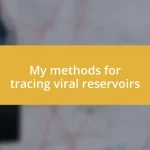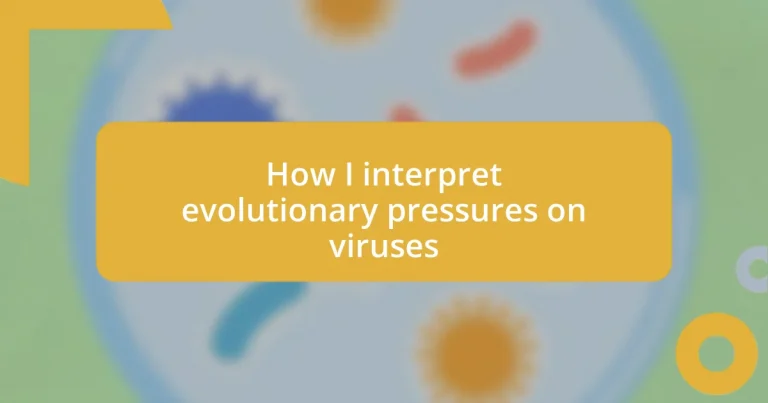Key takeaways:
- Viruses rapidly evolve in response to pressures such as host immune responses, antiviral treatments, and vaccination efforts, leading to continuous adaptation.
- Host interactions, including social gatherings and environmental changes, significantly influence the evolution and transmission of viruses.
- Adaptation strategies of viruses, such as antigenic drift, latency, and viral mimicry, highlight their resilience and ability to evade host defenses.
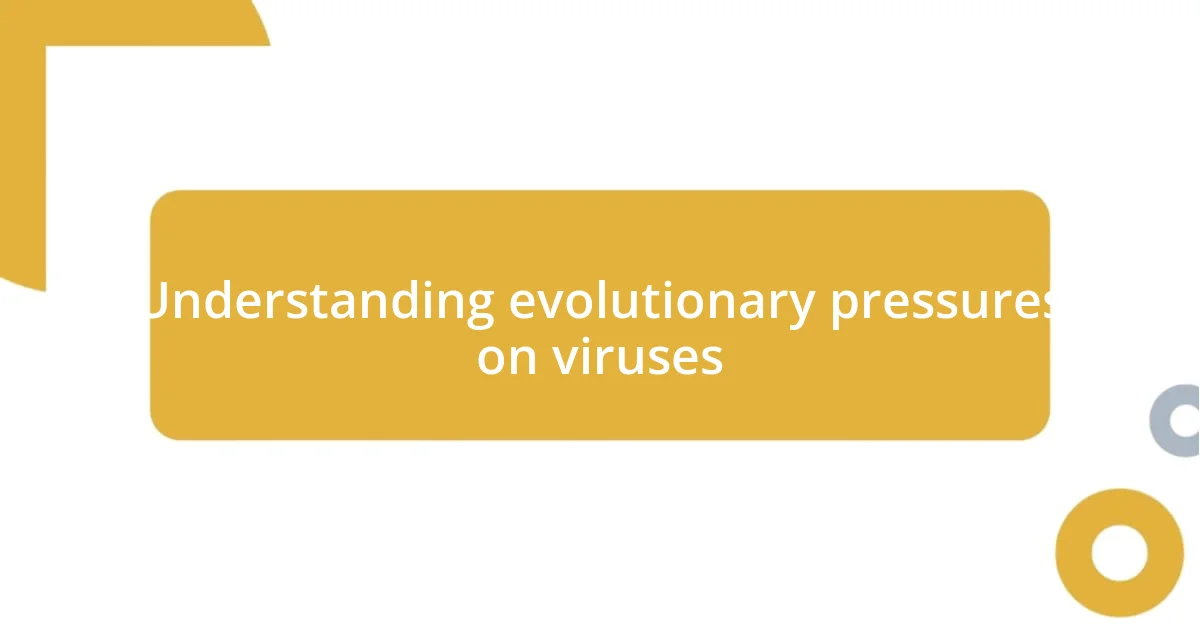
Understanding evolutionary pressures on viruses
Understanding evolutionary pressures on viruses requires looking closely at their environments and interactions. For instance, have you ever noticed how quickly a cold spreads through a crowded room? This rapid transmission reflects how viruses adapt to thrive in specific conditions, highlighting their reliance on the host population for survival.
I remember reading about a flu outbreak in my community that seemed to evolve almost overnight. It got me thinking about how viruses constantly face pressures such as immune responses and antiviral treatments. This phenomenon forces them to mutate, essentially speeding up their evolutionary clock.
It’s fascinating to realize that the very strategies we use, like vaccines, can also act as selective pressures. When we create a vaccine, we inadvertently challenge the virus to adapt. This brings to mind the question: are we always one step ahead of these adaptations? In my experience, understanding these pressures makes me appreciate the delicate balance between us and these microscopic entities.
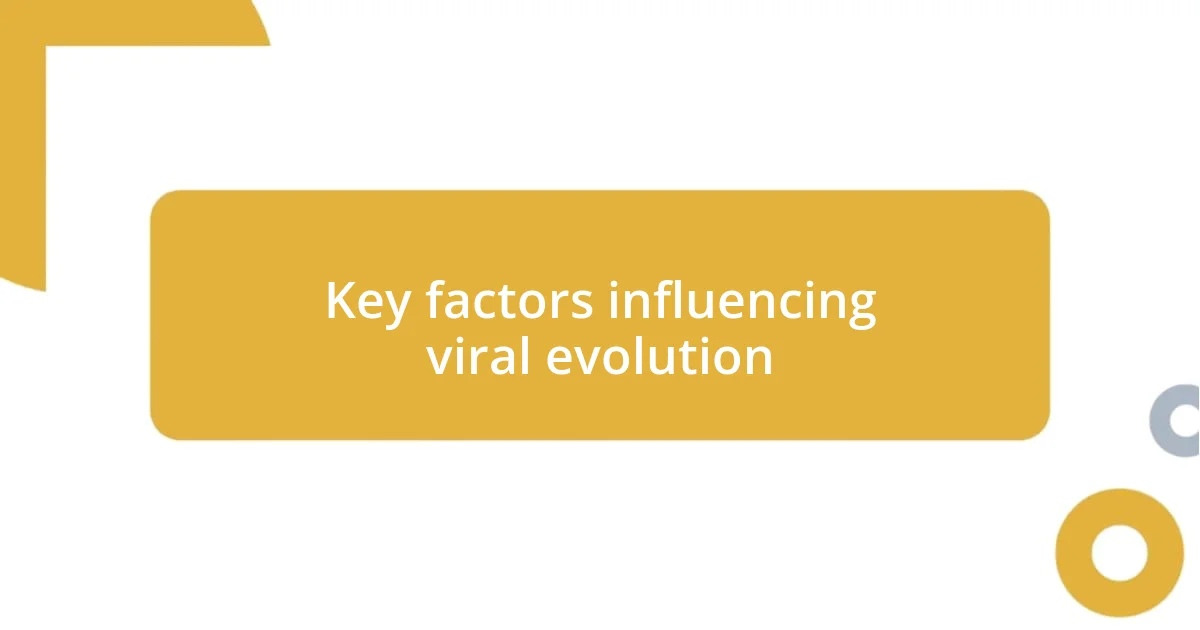
Key factors influencing viral evolution
Certain key factors shape the evolution of viruses, and I find it intriguing to examine how these elements interplay. For example, the host’s immune response is one of the most significant pressures. I recall the moment I learned about how the HIV virus constantly mutates to evade the immune system, much like a dancer who must adapt to a changing rhythm. This relentless evolution is a matter of survival for the virus, making the chase between host defenses and viral adaptations both urgent and captivating.
Here’s a quick rundown of these influencing factors:
- Host Immune Response: Viruses adapt to escape detection and destruction by the immune system.
- Antiviral Treatments: The introduction of drugs pushes viruses to develop resistance.
- Transmission Dynamics: Environmental factors, like population density, impact how viruses spread and evolve.
- Genetic Drift and Reassortment: Random mutations allow for new traits, while reassortment introduces novel combinations when two viruses infect the same host.
- Vaccination: Immunization efforts present challenges that can spur viral mutation.
Reflecting on these factors keeps me grounded in the reality that evolution is an ongoing dance of adaptation. It’s fascinating – and a little daunting – to realize how swiftly things can change in the viral world, all influenced by the choices we make as a society.
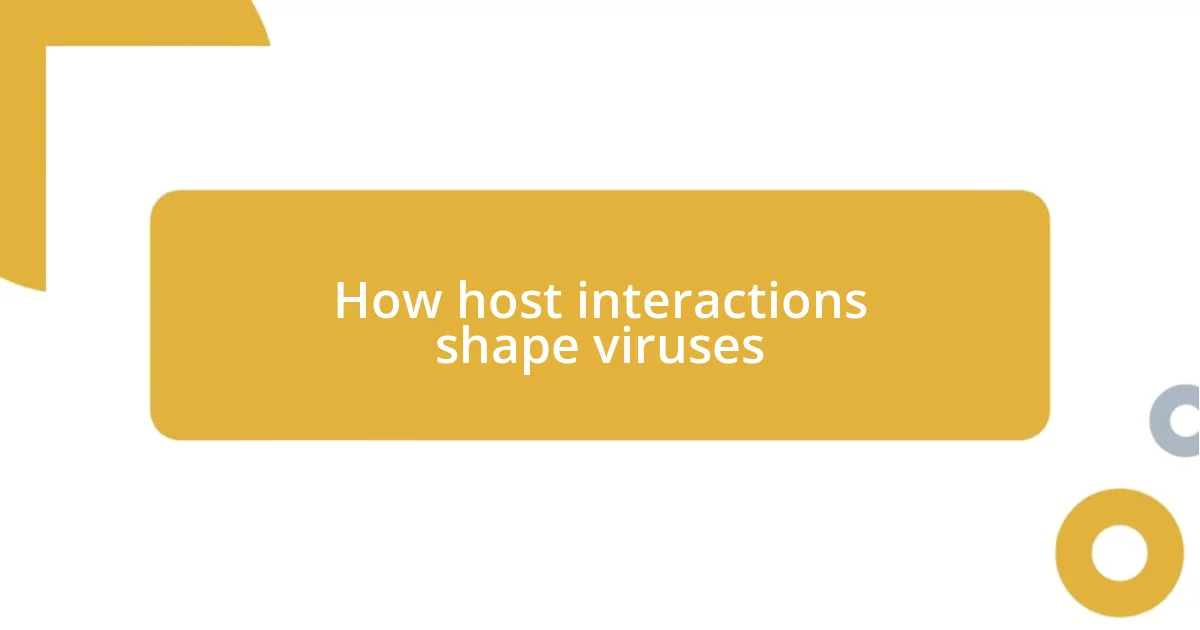
How host interactions shape viruses
Host interactions provide a unique canvas on which viruses paint their evolutionary narratives. I once attended a seminar on zoonotic viruses—those that jump from animals to humans—and it struck me how closely these viruses mirror human behaviors. For instance, when we encroach on wildlife habitats, we not only change our interactions but also open doors for deadly viruses like Ebola to cross into human populations. This connection highlights how our actions shape viral evolution in profound ways.
Every time I read about how the common flu virus spreads among humans during seasonal outbreaks, I’m reminded that various factors come into play. One interesting aspect is the role of social networks and gatherings. I remember a personal experience during a family reunion where the flu spread rapidly among us. The virus capitalized on our close interactions, demonstrating how easily it evolves to exploit host behaviors. The more we gather, the more opportunities there are for viruses to learn and adapt, almost as if they’re taking notes from our social habits.
Moreover, it’s essential to consider the environments in which hosts live. Environmental stresses, ranging from urban overcrowding to changes in climate, create new interactions that can drive viral evolution. I find it alarming yet captivating how a virus can emerge in response to changes in our environment—almost like a reflection of our collective actions. These insights really deepen my understanding of how every virus is not just a pathogen but a storyteller shaped by host interactions.
| Host Interaction | Viral Adaptation |
|---|---|
| Zoonotic Spillover | Viruses learn to exploit new host environments, often resulting in serious outbreaks. |
| Social Gatherings | Increased transmission opportunities lead to faster viral evolution. |
| Environmental Changes | Altered habitats push viruses to adapt or enter new hosts. |
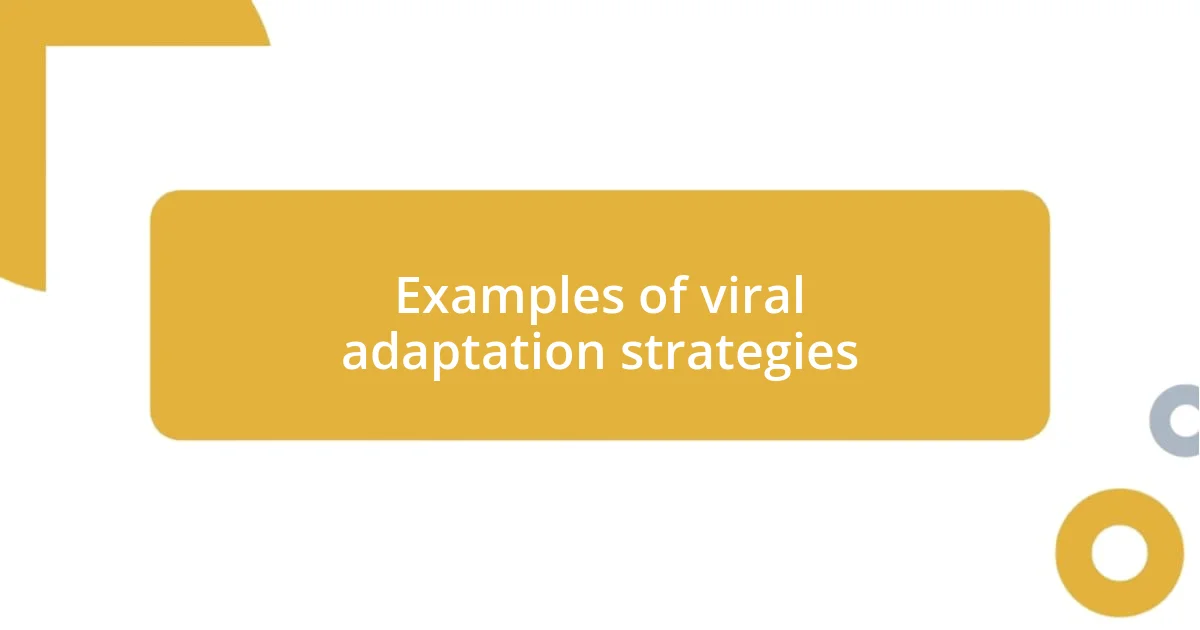
Examples of viral adaptation strategies
Viruses have an incredible ability to adapt through various strategies. One striking example is how the influenza virus employs antigenic drift. This process involves small mutations in the viral genome that allow it to escape recognition by the immune system. I remember watching the news during flu season when a new strain emerged, causing widespread concern. It made me realize how quickly viruses can adapt and the constant vigilance we need to maintain in response. Isn’t it fascinating how a microscopic organism can outsmart our defenses?
Another intriguing strategy is latency, especially in viruses like herpes simplex. They can remain dormant within host cells for long periods, only to reactivate under favorable conditions. I learned this firsthand during a discussion with a friend who experiences outbreaks of cold sores. It struck me how these viruses cleverly take a step back, biding their time, until they find an opportunity to strike again. Doesn’t that evoke a sense of nature’s cunning resilience?
Additionally, some viruses engage in “viral mimicry,” where they evolve to resemble host molecules, helping them avoid detection. When I stumbled upon this information, it felt like discovering a magic trick—how clever to wear a disguise! This ability can lead to prolonged infections and poses significant challenges for treatments. It’s almost poetic, isn’t it? The way these viruses weave themselves into the fabric of their host’s biology showcases the intricate dance of evolution and survival.







